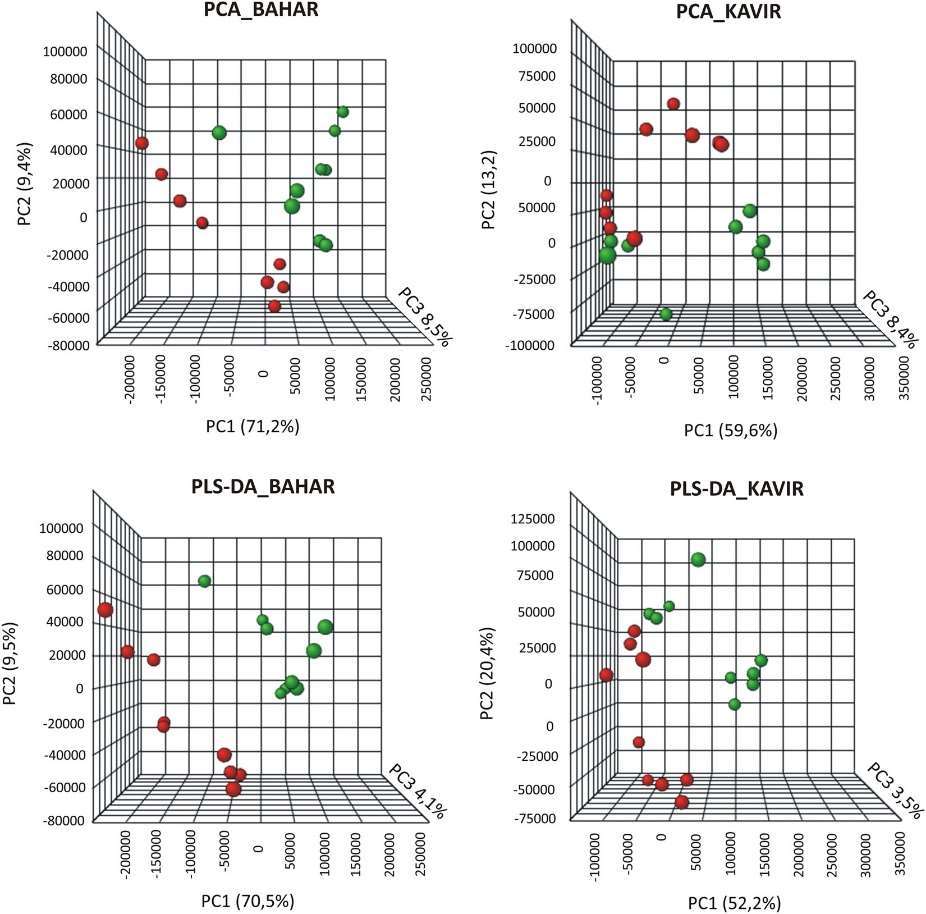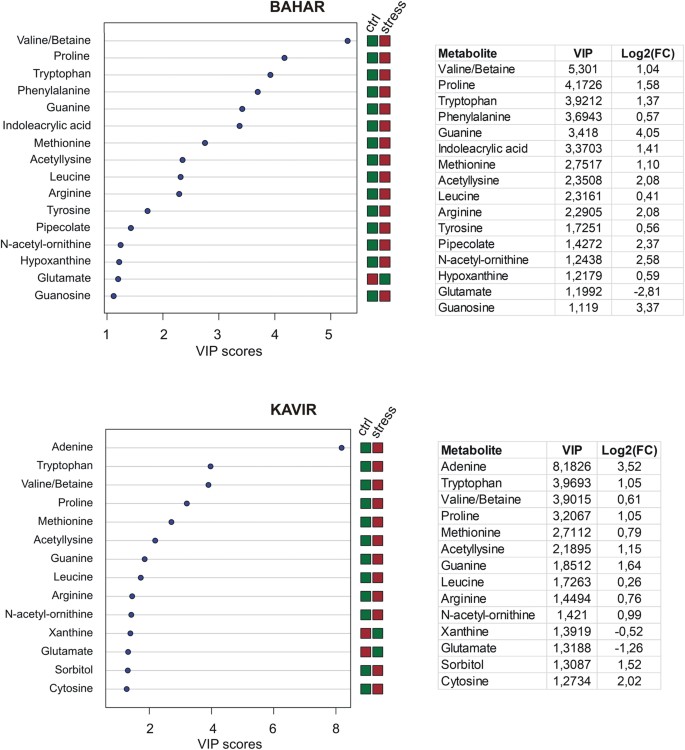Plant stress response refers to the intricate set of physiological, biochemical, and molecular mechanisms that plants employ to cope with adverse environmental conditions or stressors. These stressors can encompass a wide range of factors, including but not limited to abiotic stressors such as drought, extreme temperatures, salinity, and pollution, as well as biotic stressors like pathogen attacks and herbivore infestations. When plants encounter these stressors, they activate a cascade of responses to mitigate damage and ensure their survival.
The need to study plant stress responses and adaptive metabolism arises from the pressing challenges posed by climate change, soil degradation, and increasing food demands. These stressors impose significant threats to global agriculture, making it imperative to decipher the metabolic strategies employed by plants to thrive in adverse conditions.
Plant Stress Response Metabolomics Solutions
 Salt-Alkaline Stress Metabolomics Analysis
Salt-Alkaline Stress Metabolomics Analysis
Salt-alkaline stress poses a significant threat to crop production, as it disrupts soil balance and affects plant growth. Metabolomics provides a comprehensive view of how plants respond to salt-alkaline stress at the metabolic level.
- Identifying Stress-Responsive Metabolites: Plant metabolomics enables the identification of metabolites that play key roles in responding to salt-alkaline stress. These metabolites can serve as markers for stress tolerance and potential targets for crop improvement.
- Understanding Metabolic Pathways: By analyzing changes in metabolite profiles, researchers can unravel the metabolic pathways involved in salt-alkaline stress response. This knowledge aids in developing strategies to enhance crop resilience under such conditions.
- Precision Agriculture: Metabolomics can be applied to assess the salt-alkaline stress levels in agricultural fields. This information can guide farmers in making informed decisions regarding crop selection and soil management.
 Drought and Water Stress Metabolic Regulation Research
Drought and Water Stress Metabolic Regulation Research
Drought and water scarcity are critical challenges for agriculture, particularly in regions with irregular rainfall patterns. Metabolomics contributes significantly to understanding how plants regulate their metabolism to cope with water stress.
- Identifying Drought-Responsive Metabolites: Metabolomics allows for the identification of metabolites that are altered under drought conditions. These metabolites can serve as indicators of drought stress and help in developing drought-tolerant crop varieties.
- Characterizing Metabolic Adaptations: Researchers can gain insights into the metabolic adaptations that plants undergo to conserve water, maintain cellular homeostasis, and mitigate the effects of water stress.
- Precision Irrigation: Metabolomics can aid in optimizing irrigation practices by providing real-time data on plant water status. This promotes water conservation and efficient resource utilization in agriculture.
 Temperature, Light, and Photoperiod Stress Response Analysis
Temperature, Light, and Photoperiod Stress Response Analysis
Temperature fluctuations, variations in light conditions, and photoperiod changes can profoundly impact plant growth and development. Metabolomics facilitates the study of how plants respond to these environmental factors at the metabolic level.
- Understanding Temperature and Light Responses: Metabolomics helps uncover the metabolic changes associated with temperature and light stress. This knowledge is valuable for optimizing plant growth conditions in controlled environments, such as greenhouses.
- Timing of Critical Events: Studying photoperiod stress responses allows researchers to understand how changes in light duration affect processes like flowering. This information is crucial for crop management and production planning.
- Enhancing Crop Resilience: Insights gained from metabolomics can aid in developing crop varieties that are more resilient to temperature fluctuations, extended darkness, or altered light conditions.
Metabolomic Techniques for Plant Stress Response Studies
Liquid Chromatography-Mass Spectrometry (LC-MS): LC-MS is a highly sensitive and precise method chosen for identifying and quantifying metabolites involved in plant stress responses. It offers an extensive metabolite coverage, providing a holistic understanding of metabolic changes during stress. Our facility employs cutting-edge equipment, such as the Agilent 1290 Infinity II LC system coupled with the Agilent 6550 iFunnel Q-TOF LC/MS system.
Gas Chromatography-Mass Spectrometry (GC-MS): GC-MS specializes in profiling key stress-related metabolites like organic acids, fatty acids, and volatile compounds. Its high sensitivity and specificity are invaluable for dissecting metabolic alterations triggered by stressors such as drought and temperature fluctuations. Our facility uses state-of-the-art GC-MS platforms, including the Agilent 7890B GC system coupled with the Agilent 5977B MSD.
High-Resolution Mass Spectrometry (HRMS): HRMS excels in providing exceptional mass accuracy and resolution, ensuring precise identification and quantification of metabolites. It is particularly advantageous for untargeted metabolomics, facilitating the discovery of novel metabolites and pathways. We employ advanced HRMS instruments like the Thermo Scientific Q Exactive Hybrid Quadrupole-Orbitrap Mass Spectrometer for comprehensive plant stress response studies.
Case. Integrated Proteomic and Metabolomic Analysis Reveals Drought Responses in Two Wheat Varieties
Background
Drought resistance is critical for crop cultivation, especially in regions with limited water availability. In Iran, where a significant portion of wheat cultivation is rainfed and faces drought stress, efforts have been made to develop drought-tolerant wheat varieties. This study focuses on two Iranian wheat cultivars, Kavir and Bahar, which have different levels of drought tolerance. It aims to understand their responses to drought stress at the seedling stage using a combination of proteomic and metabolomic approaches.
Samples
The study used two wheat cultivars, Kavir and Bahar, which are recommended for warm-winter areas in Iran but have different levels of drought tolerance. The experiments involved growing these cultivars under two conditions: normal irrigation and water deficit (drought stress). Various morpho-physiological traits, proteins, and metabolites were measured and analyzed.
Technological Methods
- Plant Growth: Seeds were germinated and grown in loam soil under controlled conditions in a greenhouse. Drought stress was imposed by withholding water for one week, while control plants received regular irrigation.
- Protein Extraction: Young wheat leaves were collected, ground into a fine powder, and then proteins were extracted using a solution containing urea, CHAPS, DTT, ampholytes, and Tris base.
- 2D Gel Electrophoresis and Image Analysis: Proteins were separated using isoelectric focusing (IEF) and SDS-PAGE. Gel images were analyzed using Progenesis SameSpots software, which allowed for spot detection and quantification. Differential protein abundance was determined by one-way ANOVA.
- In-Gel Digestion and LC-MS/MS Analysis: Protein spots of interest were excised from gels, digested with trypsin, and analyzed using LC-MS/MS. Mascot searches were performed for protein identification.
- Functional Annotation: Differentially abundant proteins were subjected to Gene Ontology (GO) analysis to categorize their functions. Redundant GO terms were removed using REVIGO.
- Metabolite Extraction: Wheat leaves were ground, and metabolites were extracted using a mixture of methanol and chloroform. After centrifugation, the supernatants were collected, dried, and re-suspended in water with formic acid.
- LC-MS Metabolomic Analysis: Metabolite extracts were analyzed using Ultra High-Performance Liquid Chromatography (UHPLC) coupled with a mass spectrometer. Metabolites were identified based on mass spectrometry data and compared between samples.
Results:
The study revealed significant differences in the proteomic and metabolomic profiles of the two wheat cultivars, Kavir and Bahar, under drought stress. Several proteins and metabolites associated with drought response were identified. Notably, the more drought-tolerant cultivar, Kavir, showed better maintenance of photosynthesis-related proteins and had distinct metabolic changes compared to the sensitive cultivar, Bahar, which exhibited down-regulation of key proteins involved in photosynthesis and oxidative stress defense. Additionally, metabolite analysis highlighted changes in amino acid metabolism, osmoprotectant accumulation, and the shikimate pathway in response to drought stress.
 Multivariate statistical analysis of metabolomics data from Bahar and Kavir wheat leaves.
Multivariate statistical analysis of metabolomics data from Bahar and Kavir wheat leaves.
 Important features identified by PLS-DA through MetaboAnalyst web-based platform
Important features identified by PLS-DA through MetaboAnalyst web-based platform
Reference
- Michaletti, Anna, et al. "Metabolomics and proteomics reveal drought-stress responses of leaf tissues from spring-wheat." Scientific reports 8.1 (2018): 5710.


 Multivariate statistical analysis of metabolomics data from Bahar and Kavir wheat leaves.
Multivariate statistical analysis of metabolomics data from Bahar and Kavir wheat leaves. Important features identified by PLS-DA through MetaboAnalyst web-based platform
Important features identified by PLS-DA through MetaboAnalyst web-based platform

